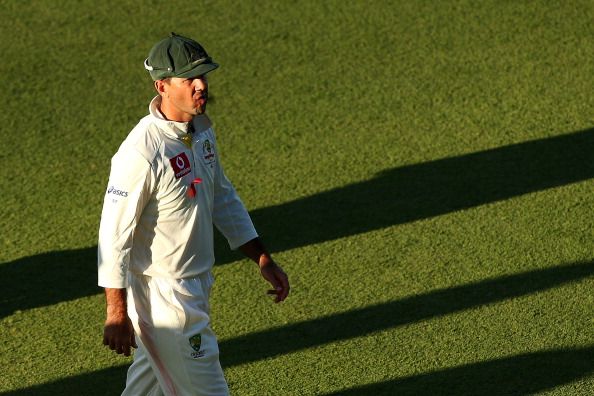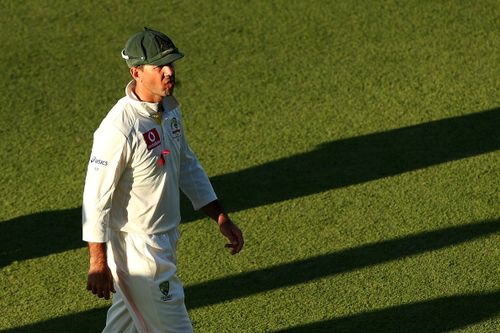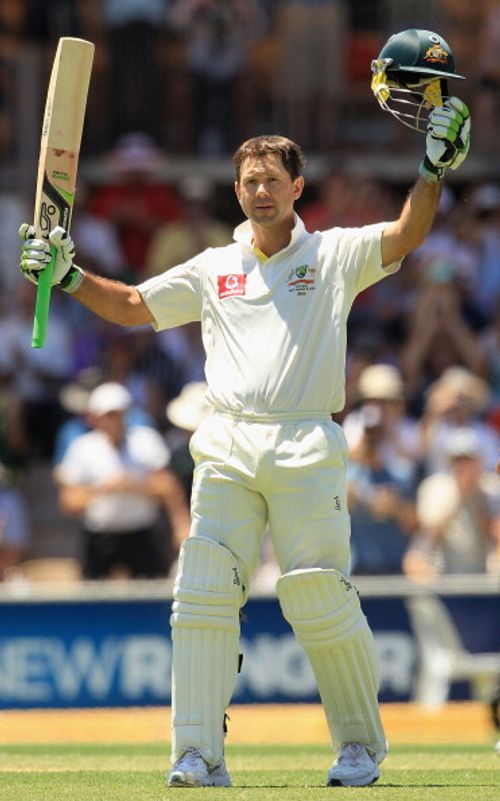
Ricky Ponting, the man we loved to hate: an Indian fan’s perspective
The human mind thinks in relative mode. Hence, to put things in perspective we tend to compare, be it between two data points or even two individuals. That is why it is imperative: for every super hero that we grew up fantasizing, there was always an equally mean and ruthless villain whom we abhorred. Because it is in the process of taming the villain does the hero get an opportunity to establish just how good he is, and thereby earn our love and adulation. So for every He-Man, we had a Skeleton; for every Batman there is a Joker and closer home for every Vijay (of Agneepath fame) there is a Kancha Cheena.
For an Indian cricket fan growing up in the 1990s and idolizing Sachin Tendulkar, Ricky Ponting was the super villain (although he earned the tag in the first decade of the 21st century, or more specifically between 1999-2006). So what made Ricky the super villain? After all, he was only a great batsman who was hailed as equal or better than Sachin at different times in their career. The names that instantly come to mind are Saeed Anwar, Mark Waugh and of course, Brian Lara. But Ponting stood out for four main reasons:

His arrogance: Of the many tributes and eulogies that are being attributed to Punter at the moment, I have noticed that many fans have mistaken his arrogance as self-belief. Some have even gone on to state that unless one is brash they cannot ascend to the pinnacle of success and they have claimed the word ‘arrogant’ has been labelled against him by fans who cannot tolerate his success. But nothing can be further than the truth. Let us look at Jacques Kallis. As an Indian, one might be awed by his achievements and even jealous of the fact that the Proteas have such an ace all-rounder in their ranks, but no one would say that Kallis is arrogant. Similarly, if we look at other sports, Roger Federer and Lionel Messi are torch bearers in their respective domain without compromising their sportsman spirit.
The same however, cannot be said about the former Australian skipper. We distinctly remember his misbehavior with Sharad Pawar during the prize distribution ceremony of Champions Trophy in 2006. And of course, his unethical behavior during India’s tour Down Under in 2007-08 is still etched fresh in the memories of cricket fans. However, his misdemeanor wasn’t reserved for only the Indian team. Even as late as the end of 2010 (Ashes), a period by which Ponting as a person had mellowed down, we remember how he got involved in a lengthy confrontation with on-field umpires after the third umpire did not find any ground to overturn the on-field umpire’s decision. A highly motivated sportsperson is always expected to be aggressive on the field, but there is a fine line between aggression and arrogance that should not be crossed.
Part of an all-conquering Aussie squad: His reign at the top of the batting chart coincided with an Australian era of supremacy. That gave him the aura of invincibility. So he was not only scoring tons of runs, but his runs were also instrumental in winning matches, thanks to the combined depth of batting, bowling and fielding that the Aussie squad possessed. Or in other words, the Kangaroos had the capability of turning every special innings of Punter into a memorable win, seldom did his efforts go down the drain. So it comes as no surprise that Ponting as a player, had featured in more number of Tests won than any other player in the history of the game. That is a privilege that the Sachins and Laras of the world did not enjoy and it made fans like us all the more jealous of Ricky.
His age and period of play: If one looks at other illustrious batting legends who had not been out dazzled by the Indian little Master in the last two decades, we will realize that most of them were senior to Sachin by five or more years. For an average Sachin fan, this age game seemed like a safety valve and the logic was that as long as Tendulkar can keep up with these greats during their playing days, he can always surge ahead afterwards.
The only exception to that was once again, Ricky Ponting. He was not only a couple of years junior to the Indian little master, but also a better athlete. So conventional wisdom indicated that Ponting would outlast Sachin. And by the end of 2008, most of us resigned to the fact that it was just a matter of time before the Tasmanian usurped our Tendlya from the throne reserved for the batsman with most number of Test centuries. Surely no other batsman had given us a scare as massive as this man did.

Ponting-specials against India: While it is inevitable that from time to time one’s favorite team would be at the receiving end of a legend’s willow; the occasions that the Punter chose hurt the most. One of them was of course, the World Cup final in 2003. The ease with which he demolished the Indian attack completely demoralized the entire squad and the Indians were in no position to make a match out of it when their innings resumed. The other one had to be the classic double century that he dished out in 2003 in the Melbourne Test; this after Sehwag had raised hopes of an Indian victory with a scintillating 195 on the opening day of the Test. Even earlier this year, when he was supposed to be struggling for form, he made it distinctly clear that he still relished every opportunity to tear apart Indian bowlers.
The Things that we learnt from Ricky:
In the beginning of the article I had mentioned how the super-villains help us to understand our heroes better. Ricky Ponting did exactly the same thing to Sachin loyalists. For a long time, a century was just another number that we took as granted from Sachin. It was as if Sachin is so good that all he had to do was just turn up for five innings and a century would inevitably follow. Punter, with his subsequent dip in form post 2008, showed us that it is never that easy. In fact, it never was and will never be. From then onward, one was in a much better position to appreciate every single century that the little Master scored.
Similarly, the way Ponting’s career graph tailed off in the last couple of years served as a real life example of just how difficult it is for any superstar to regain his yesteryear glories towards the twilight of one’s career. That Sachin was able to do that at the age of 37 provided further testimony to the unparalleled determination the man possessed. Until then we had taken the phrase ‘form is temporary and class is permanent’ too loosely and had taken for granted that every great batsman is automatically bound to come back to form sooner than later.
Probably these lessons could have been learnt from other cricketers’ life cycle as well. But the truth is, we had not followed their journey as closely as we did in case of Ponting. Even in the midst of all the jealousy, hatred and heartbreak, that is the amount of respect this man commanded. And it is only fair that we offer him a sincere note of thanks for providing us with these insights of batsmanship.
Debates will never cease as to who (Sachin or Ricky) achieved more on the cricketing field under the different circumstances in which they played. But one thing is for sure that, cricket as a game benefited greatly by the simultaneous presence of these two legends in the last two decades.
Thanks Ricky, thanks for all the entertainment.